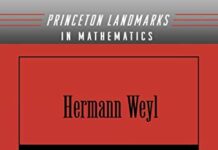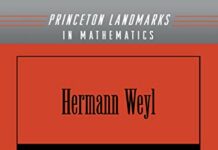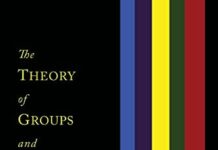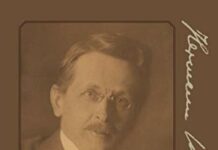
Ebook Info
- Published: 1994
- Number of pages: 176 pages
- Format: PDF
- File Size: 10.12 MB
- Authors: Hermann Weyl
Description
The hard won power … to assess correctly the continuum of the natural numbers grew out of titanic struggles in the realm of mathematical logic in which Hermann Weyl took a leading part. — John Archibald WheelerHermann Weyl (1885–1955) ranks among the most important mathematicians and physicists of this century. Though Weyl was not primarily a philosopher, his wide-ranging philosophical reflections on the formal and empirical sciences remain extremely valuable. Besides indicating clearly which results of classical analysis are invalidated by an important family of “non-circular” (predicative) theories, The Continuum wrestles with the problem of applying constructive mathematical models to cases of concrete physical and perceptual continuity. This new English edition features a personal reminiscence of Weyl written by John Archibald Wheeler.Originally published in German in 1918, the book consists of two chapters. Chapter One, entitled Set and Function, deals with property, relation and existence, the principles of the combination of judgments, logical inference, natural numbers, iteration of the mathematical process, and other topics. The main ideas are developed in this chapter in such a way that it forms a self-contained whole.In Chapter Two, The Concept of Numbers & The Continuum, Weyl systematically begins the construction of analysis and carries through its initial stages, taking up such matters as natural numbers and cardinalities, fractions and rational numbers, real numbers, continuous functions, curves and surfaces, and more.Written with Weyl’s characteristic passion, lucidity, and wisdom, this advanced-level volume is a mathematical and philosophical landmark that will be welcomed by mathematicians, physicists, philosophers, and anyone interested in foundational analysis.
User’s Reviews
Editorial Reviews: About the Author Along with his fundamental contributions to most branches of mathematics, Hermann Weyl (1885–1955) took a serious interest in theoretical physics. In addition to teaching in Zürich, Göttingen, and Princeton, Weyl worked with Einstein on relativity theory at the Institute for Advanced Studies. Hermann Weyl: The Search for Beautiful Truths One of the most influential mathematicians of the twentieth century, Hermann Weyl (1885–1955) was associated with three major institutions during his working years: the ETH Zurich (Swiss Federal Institute of Technology), the University of Gottingen, and the Institute for Advanced Study in Princeton. In the last decade of Weyl’s life (he died in Princeton in 1955), Dover reprinted two of his major works, The Theory of Groups and Quantum Mechanics and Space, Time, Matter. Two others, The Continuum and The Concept of a Riemann Surface were added to the Dover list in recent years. In the Author’s Own Words:”My work always tried to unite the truth with the beautiful, but when I had to choose one or the other, I usually chose the beautiful.” “We are not very pleased when we are forced to accept mathematical truth by virtue of a complicated chain of formal conclusions and computations, which we traverse blindly, link by link, feeling our way by touch. We want first an overview of the aim and of the road; we want to understand the idea of the proof, the deeper context.” “A modern mathematical proof is not very different from a modern machine, or a modern test setup: the simple fundamental principles are hidden and almost invisible under a mass of technical details.” — Hermann Weyl Critical Acclaim for Space, Time, Matter:”A classic of physics . . . the first systematic presentation of Einstein’s theory of relativity.” — British Journal for Philosophy and Science
Reviews from Amazon users which were colected at the time this book was published on the website:
⭐This 1919 work by Hermann Klaus Hugo Weyl (1885-1955) shows the continuation of the confusion between physical space and mathematical number systems which has persisted since classical Greek times. Although Weyl was one of the true geniuses of the first half of the 20th century, he over-estimated the “reality” of mathematical concepts. He tried too hard to identify mathematical concepts (which exist in the human mind) with the physical world (which exists “out there”).This paper apparently shows the early signs of Weyl’s conversion to the intuitionist creed, following Brouwer into irrelevant obscurity as regards the foundations of mathematics. (See for example the “concluding remarks” at the end of Chapter 1, pages 45-50. See also Weyl’s comment in the 1932 reprint preface that his “current beliefs” had already made this essay obsolete.) This semi-mysticism does not diminish at all the importance of Weyl’s key contributions to physics and other areas of mathematics. There are more than 20 concepts in mathematics which are named after Weyl, but nothing in the foundations of mathematics as far as I know.A good solution to the issue of the suitability of the real number system for modelling physical magnitudes (such as length and time) is to distinguish between reality and measurements. We only know the real world through observations which are an interaction between the “world out there” and us human beings. So the so-called real numbers are a very good model for our measurements of the real world, but maybe not such a good model for the real world itself (which is “behind the phenomena”). Quantum field theory in particular has taught us to distinguish between phenomena which we can measure and the real things-in-themselves (the ontology) which we can only guess at. The first is objective. The second is speculative. Two different kettles of fish!All in all, this book is useful as a historical document of the kind of confusion which reigned in the foundations of mathematics in the early 20th century. Thankfully mathematics emerged from this painful confusing twilight of intuitionism versus formalism into the bright daylight of dry, lifeless pure formalism. Something important is missing from the austere modern dogma of first-order languages and model theory. Old documents like this help us to understand what has been lost, but I think few mathematicians would want to return to that era of muddled metaphysical mysticism.Chapter 1 commences with the philosopher’s version of logic going back to Kant and even Aristotle. It’s unfortunate that Weyl tried so hard to fit mathematics within the framework of the irrelevant academic philosophy of that time. He should have given up when it became clear that this was a “bad fit”. Mathematical logic is just totally different to “natural logic” and philosophical logic. Chapter 1 tries to obtain inspiration and justification for mathematical logic from everyday informal-language logic. Mathematics is just totally different to informal logic.I’m finding it difficult to find anything positive to talk about in this book. The best thing I can say is that it makes me so glad that formalism won the battle against intuitionism. (Hilbert famously was deeply disappointed that his PhD student Weyl was converted to Brouwer’s intuitionist cult.)In Chapter 2, sections 6, 7 and 8, Weyl discusses concerns about the validity of the real numbers as a model for physical magnitudes. (I had these qualms myself in undergraduate years because I was studying mathematics and physics at the same time.) The point which Weyl seems to miss is that mathematical systems are only models! Models aren’t always perfect!
⭐This is a famous book by a famous mathematician on a famous problem well known to experts It has Pedigree starting with Georg Cantor to David Hilbert and up Paul Cohen
⭐Weyl is correct about the continuum. The reason we are having trouble establishing the continuum of the natural numbers is the we are trying to establish separation and continuum at the same time.
⭐I first learned of this book from Eves and Newsom back in the early 1960’s. It sounded fascinating but I couldn’t read German. Now we’re lucky to have it in Englsh translation with an introduction that relates Weyl’s notation and terminology to the current one. (Or, if you’re really out of date like me, you can use it in reverse to catch up on the modern field of foundations studies).Precise statement is the essence of the study of the foundations of mathematics and what follows won’t rise to that level but I hope it won’t be seriously misleading either. In real life definitions are often circular; dictionaries define words in terms of other words, etc. Ordinarily this is not a problem but vicious circles can happen. In 1872 Dedekind published a definition of real numbers in terms of sets of rational numbers.This fulfilled a long term dream of defining the reals without reference to geometric concepts. Encouraged by this Frege began his project of deriving all of mathematics from basic logical notions. He was largely successful but Russell found a contradiction within his system. It wasn’t clear what caused this problem and Poincare suggested that it arose because Frege had allowed a certain kind of circular definition called ‘impredicative’. While it was true that the contradiction could be eliminated by avoiding impredicative definitions, this solution was very drastic: it also barred Dedekind’s defintion of the real. Most mathenaticians, including Whitehead and Russell, shrank from this step and proposed more moderate ways of fixing the foundations of mathematics. Working in the aftermath of World War I, Weyl was attracted to the more radical idea of trying to develop mathematics without using any impredicative definitions. He managed to derive some, but far from all, of analysis and the result was this book. Subsequently, Weyl was attracted to an even more radical critique of mathematical foundations proposed by Brouwer (you can read about this in Mancosu’s great anthology “From Brouwer to Hilbert”. At the same time Weyl remained passionately attached to mainstream mathematics. As far as I know, he never resolved his own conflicts about this. Naturally, anything by Weyl is brilliant and worth reading and this book is no exception.
⭐Why 3 stars? It has nothing to do with the context of the book but the price.One may legitimately give 5 stars to any of Hermann Weyl books– as he was not only a grand mathematician but also a prominent philosopher and physicist who with his open-mindedness and creativity contributed much to each faculty in the 20th century. However one may wonder why his books written long ago cannot be offered by Amazon as free e-books (in Kindle edition). Of course if you are a researcher, the Kindle edition lacks the page number you need in your reference. In any case, there is no such a short-come in the FREE PDF versions of Weyl books that you can easily find on internet, they include:__The Continuum__Symmetry__Philosophy of Mathematics__Mind and Nature__The Theory of Groups and Quantum Mechanics
⭐and
⭐are two true classics by this arthor.This book translates badly and the subject has been covered better and more clearly by others like:
⭐. The KAM theorem made Weyl’s arguments obsoleteas it gave a better technology for the rational number continuumapproximations used in these kinds of discussions. He never quite made his circulus vitiosus idea work.
Keywords
Free Download The Continuum: A Critical Examination of the Foundation of Analysis (Dover Books on Mathematics) in PDF format
The Continuum: A Critical Examination of the Foundation of Analysis (Dover Books on Mathematics) PDF Free Download
Download The Continuum: A Critical Examination of the Foundation of Analysis (Dover Books on Mathematics) 1994 PDF Free
The Continuum: A Critical Examination of the Foundation of Analysis (Dover Books on Mathematics) 1994 PDF Free Download
Download The Continuum: A Critical Examination of the Foundation of Analysis (Dover Books on Mathematics) PDF
Free Download Ebook The Continuum: A Critical Examination of the Foundation of Analysis (Dover Books on Mathematics)




